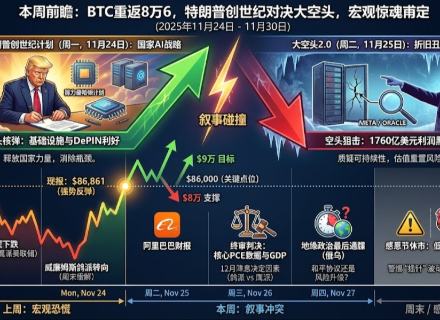In September 2025, Vitalik Buterin officially proposed the "Rainbow Staking" draft on the Ethereum Research Forum. This proposal, based on an initial concept put forward by Ethereum Foundation researcher Barnabé Monnot in February 2024, further systematizes a protocol-level solution to address the centralization risks in Ethereum's staking ecosystem. The draft introduces a dual-layer mechanism combining "Heavy Staking" and "Light Staking," utilizing Verifiable Delay Functions (VDF) for random node selection. For the first time, it explicitly incorporates "self-limitation" clauses (such as a 25% share cap) for liquidity protocols into the underlying protocol, aiming to promote the decentralization of validation power and dynamic balance within the ecosystem. The proposal directly responds to the market dominance of liquidity giants like Lido—which currently holds 32% of the network's staked share. Within 48 hours of its release, decentralized protocol tokens such as SSV, Obol, and Rocket Pool saw price increases, while LDO dropped by 4.7%, demonstrating the market's high sensitivity to expectations of "rebalancing" at Ethereum's consensus layer.

1. Centralization Risks Under Lido's Dominance Draw Attention
The Ethereum staking ecosystem is facing a "re-centralization" challenge. Lido, with a 32% staking share and a "double concentration" model where the top 5 out of its 38 node operators control over half of the signing power, poses a potential threat to the consensus layer. Its "one token, one vote" governance mechanism concentrates 63% of voting power in the top 100 addresses, and the annual $180 million in fees has not been adequately returned to ETH holders. More concerning, any technical mishap (such as missed blocks or double signing) could trigger stETH depegging and cause cascading liquidations—the 6% stETH discount in June 2022 still haunts the market. While Lido provides the convenience of liquid staking, it objectively suppresses the participation of solo stakers and increases systemic risk. If a single protocol's staking ratio exceeds 30%, the network becomes more vulnerable to security threats such as a 51% attack, which runs counter to Ethereum's vision of decentralization.
2. Core Mechanisms of the "Rainbow Staking" Proposal: Layering and Limitation
The "Rainbow Staking" framework proposed by Vitalik aims to enhance system resilience through service unbundling, allowing different types of participants—including solo stakers and professional operators—to choose service types according to their own conditions.
Its core design includes two paths:
● Heavy Staking: Targeted at services with high capital efficiency requirements, such as finality gadgets (FFG) and the Gasper mechanism. Participants must run full nodes, sign every slot, and bear slashing risks, making it suitable for professional node operators.
● Light Staking: Focused on censorship resistance and Sybil resistance mechanisms, relying on a lottery mechanism for random participant selection, with lower signing frequency and minimal slashing risk. The threshold can be as low as 1 ETH, making it more suitable for ordinary users.
This mechanism also introduces a 25% protocol share red line, which, once exceeded, automatically triggers punitive adjustments. At the same time, VDF is used to enhance randomness, and segmented interest rates are used to adjust the returns of large and small pools. The goal is to revert "super protocols" like Lido to neutral technical service channels and curb their excessive expansion.
3. Decentralized Protocols Respond Jointly, Competing for Staking Market Share
The "Rainbow Staking" concept quickly gained support from a group of decentralized protocols, including SSV, Obol, Rocket Pool, and Puffer, all of which announced compatibility with the design and are actively seeking market share beyond Lido.
Specific developments include: SSV's node count grew by 22% in one week and launched a validator sharding plugin; Obol partnered with EtherFi to advance a multi-operator testnet; Rocket Pool, through community voting, lowered the mini pool threshold to 8 ETH and set a 25% self-imposed share cap; Puffer, with a node entry as low as 1 ETH and hardware isolation technology, received funding from the Ethereum Foundation.
These projects generally emphasize "non-custodial" and "sharding" features, aiming to increase participation opportunities for solo stakers and enhance the credibility of LSTs (liquid staking tokens). The price movements of related tokens in the secondary market also reflect investors' optimism about decentralized alternatives.

4. Conclusion: Decentralization Has No "Endgame," Only Dynamic Balance
Lido has not responded passively. Its recent initiatives include launching a dual governance mechanism for stETH and LDO, reducing the fee rate to 7%, establishing a decentralized reserve fund of 20,000 ETH, and launching a "Community Staking Module" plan to expand node operators to over 100. However, the actual implementation of "Rainbow Staking" still faces many challenges, including governance disagreements (such as the influence of investment institutions like a16z and Paradigm at developer meetings) and the practical timeline for advancing a hard fork.
If the proposal can be successfully implemented with the 2026 Pectra upgrade, the concentration of Ethereum's staking market is expected to drop to CR5<45% within the next three years, with Lido's share potentially shrinking to 22%-25%, and the network's annualized yield expected to remain at 3.2%-4.8%.
Ultimately, decentralization is not a final state that can be achieved once and for all, but a dynamic process of continuous adjustment and iteration between technical mechanisms, economic incentives, and governance culture. Ultimately, decentralization is not a final state that can be achieved once and for all, but a dynamic process of continuous adjustment and iteration between technical mechanisms, economic incentives, and governance culture.
Join our community to discuss and grow stronger together!




